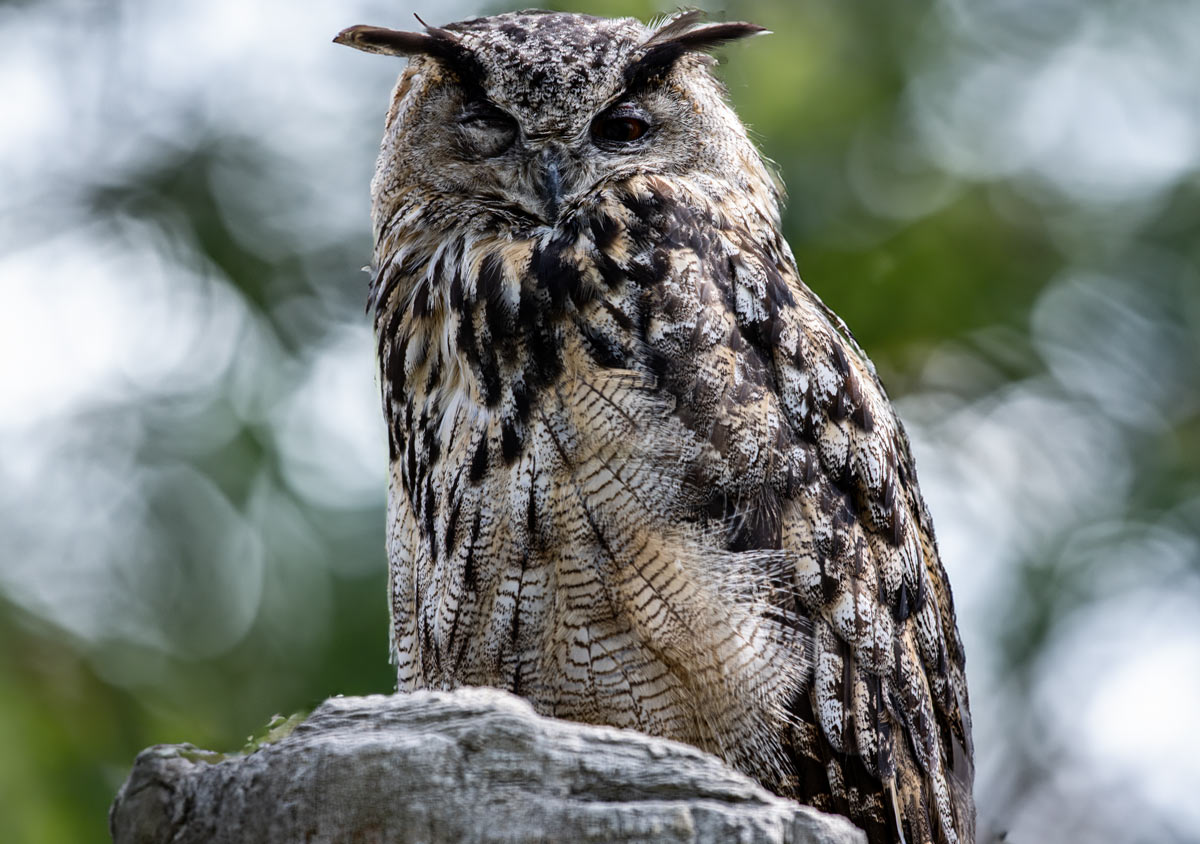

Location at the Zoo
Kids Zoo
Region
Eurasia
Eurasian Eagle Owl
Bubo bubo
The Eurasian Eagle Owl is one of the largest owl species in the world, known for its impressive size and striking appearance. It has distinctive orange eyes, a large, powerful beak, and prominent ear tufts on its head. Its plumage varies in color from mottled brown to gray, providing excellent camouflage in its woodland habitat.
Conservation Status: IUCN

Distribution
Eurasian Eagle Owls are found across a vast range, including Europe, Asia, and parts of North Africa. They inhabit a variety of habitats, from forests and mountains to semi-deserts and rocky cliffs.
Habitat
These owls prefer rugged landscapes with ample roosting and nesting sites. They are commonly found in forests, rocky areas, and cliffs, where they can perch and hunt for prey.
Diet
Eurasian Eagle Owls are carnivorous apex predators, feeding on a wide range of prey including small mammals like rodents, rabbits, and birds, as well as reptiles, amphibians, and large insects.
Reproduction
Breeding season for Eurasian Eagle Owls typically occurs in late winter to early spring. They nest in cliffs, trees, or abandoned nests of other large birds. Females lay 1-4 eggs, and both parents share the responsibility of incubating the eggs and raising the chicks.
Adaptation
Eurasian Eagle Owls have several adaptations that make them efficient predators. Their keen eyesight and acute hearing enable them to detect prey from a distance, even in low light conditions. They have silent flight feathers that allow them to fly silently and stealthily, aiding in surprise attacks on prey.
Threats to Survival
While the Eurasian Eagle Owl faces few natural predators as adults, threats to their survival include habitat loss, disturbance at nesting sites, and accidental poisoning from pesticides and rodenticides used in agricultural areas.